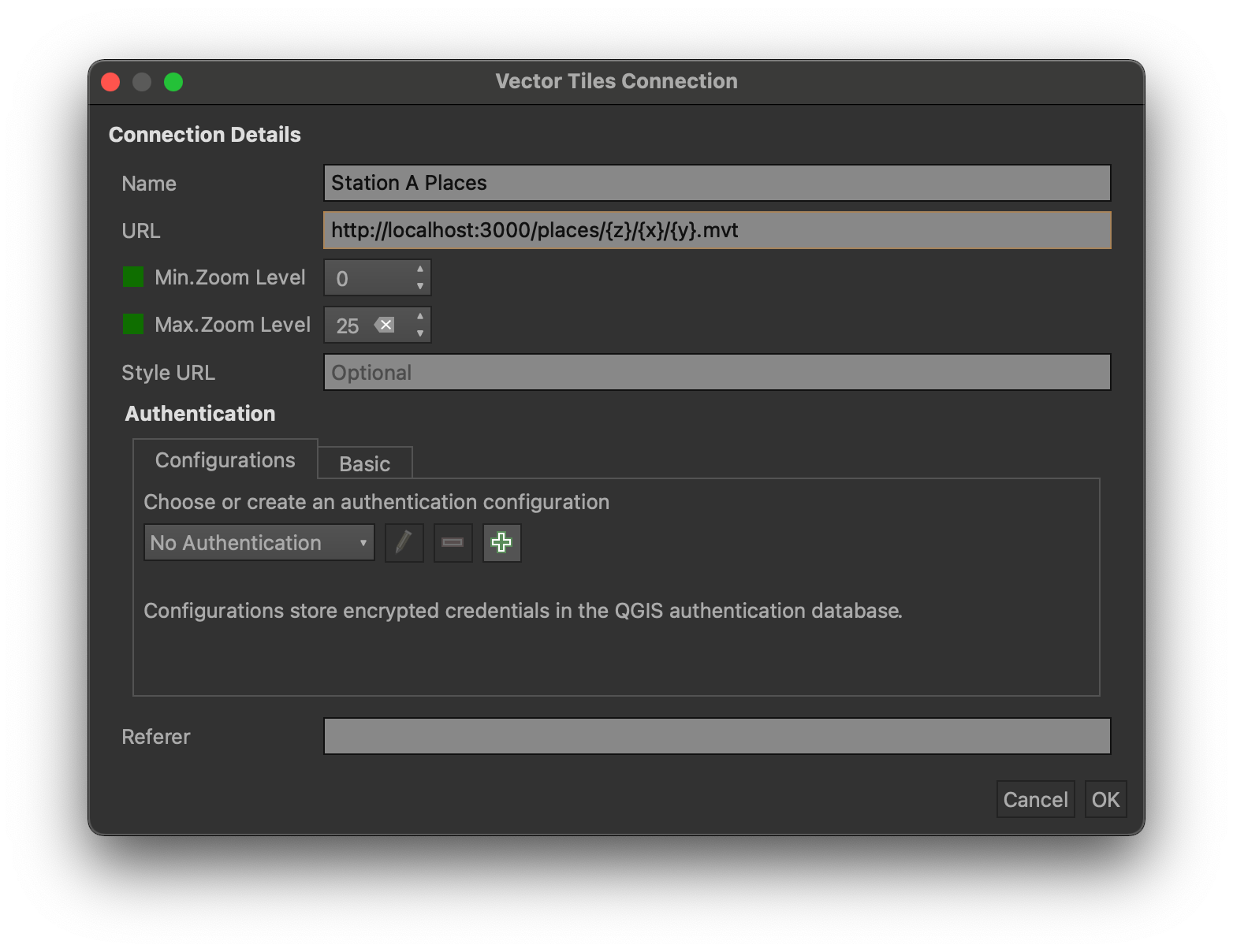Tilenol is a scalable web server for serving geospatial data stored in multiple supported backends as Mapbox Vector Tiles.
Navigate to the root tilenol/ directory (where the Makefile is located) and run:
make install
usage: tilenol [<flags>] <command> [<args> ...]
Flags:
--help Show context-sensitive help (also try --help-long and --help-man).
Commands:
help [<command>...]
Show help.
run [<flags>]
Runs the Tilenol server
version
Prints out the version
usage: tilenol run [<flags>]
Runs the Tilenol server
Flags:
--help Show context-sensitive help (also try --help-long and --help-man).
-d, --debug Enable debug mode
-f, --config-file=tilenol.yml Server configuration file
-p, --port=3000 Port to serve tiles on
-i, --internal-port=3001 Port for internal metrics and healthchecks
-x, --enable-cors Enables cross-origin resource sharing (CORS)
-s, --simplify-shapes Simplifies geometries based on zoom level
-n, --num-processes=0 Sets the number of processes to be used
# Cache configuration (optional)
cache:
redis:
host: localhost
port: 6379
ttl: 24h
# Layer configuration
layers:
- name: buildings
minzoom: 14
source:
elasticsearch:
host: localhost
port: 9200
index: buildings
geometryField: geometry
sourceFields:
area_sqft: building.area_sqft
height_ft: building.height_ftTilenol is also available as
stationa/tilenol on DockerHub. This
can be helpful when running in cloud environments or on Kubernetes:
# To run the Docker image on your machine, you can use the following:
docker run \
--rm \
-it \
-p 3000:3000 \
-v my-tilenol-conf.yml:/conf/tilenol.yml \
stationa/tilenol \
run -p 3000 -f /conf/tilenol.yml
# Note that this will bind tilenol to your local port 3000, and requires a configuration file to be
# mounted at the /conf/tilenol.yml pathCurrently, the Docker image tags are published according to the following scheme:
vM.m.pis the image built for the exact SemVer major/minor/patch versionM.m.p, e.g.v1.0.7vMis the latest image available for the given SemVer major version numberM, e.g.v1latestis the latest stable image availabledevelis the latest unstable image available based on the last commit made to themainbranch
We recommend you use either vM or vM.m.p where possible, though your appetite for risk may vary
by use case.
Currently, tilenol supports the following data backends:
Tilenol layers can also be viewed in GIS software such as QGIS.
Instructions for adding a Tilenol layer to QGIS 3.16:
- Navigate to Layer > Add Layer > Add Vector Tile Layer
- Click on New, and then Create a New Generic Connection
- Configure the Connection Details, for example:
- Name: Places
- URL: http://localhost:3000/places/{z}/{x}/{y}.mvt
- Min.Zoom Level: 0
- Max.Zoom Level: 25
Example screenshot, pointing QGIS to a locally running instance of Tilenol:
- Click OK and then Add
- You should be able to see the Tilenol places layer at appropriate zoom levels
When contributing to this repository, please follow the steps below:
- Fork the repository
- Submit your patch in one commit, or a series of well-defined commits
- Submit your pull request and make sure you reference the issue you are addressing

